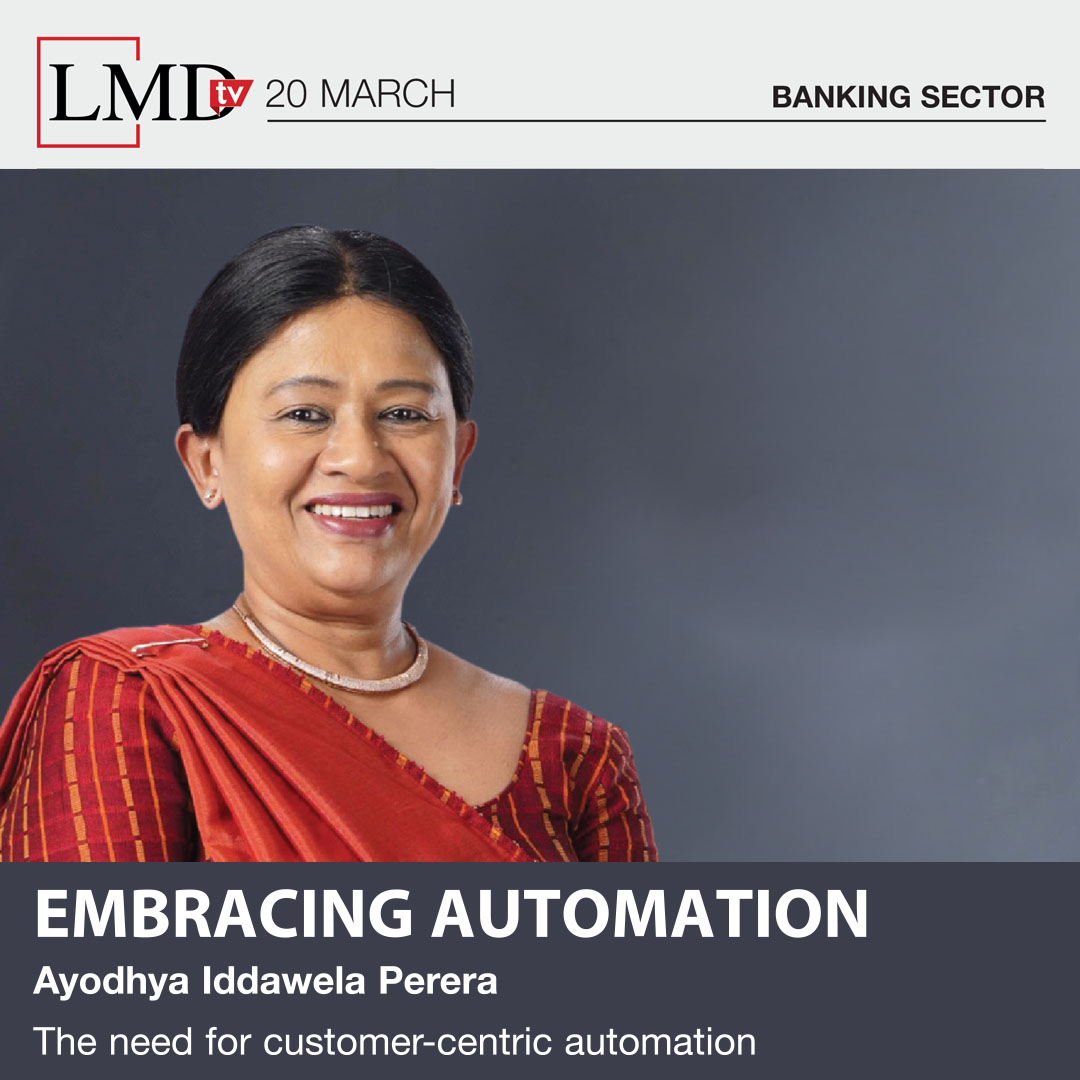LMDtv 2

Automation has become an integral component of the banking sector today. And although it takes many forms and serves many purposes, the Managing Director of Sampath Bank Ayodhya Iddawela Perera notes that its primary focus has always been the customer.
“We believe that automation is driven by customer requirements,” she explained, in a recent interview aired on LMDtv.
She continued: “Banks pioneered the use of automation to improve customer service with the introduction of ATMs and such in the early days. But in recent times, automation has been used to improve customer onboarding processes, risk management, data collection and data validation.”
“Automation encompasses a wide range of technologies and processes, including chatbots for customer service, algorithmic trading, robotic process optimisation, automation for back office tasks, and artificial intelligence for risk assessment and fraud detection,” she added.
Perera pointed out that “automation is often seen as almost being synonymous with efficiency. However, automation as an overall approach to banking requires a further step where it is viewed as an avenue to provide better products and services to customers, as populations grow and the services that banks offer multiply.”
“While automation serves many purposes in the banking sector today with many players having taken strides in adopting it for process efficiency, there is a need for broader acceptance as an overall approach in banking,” she asserted, adding that “this involves integrating automation into business strategies and culture rather than focussing on individual processes.”
Perera also outlined how customers have adopted automation: “There used to be a clear demographic divider where younger and more tech savvy customers tended to be more open to automation – and expected it as a service from banks – while the older demographic expressed a preference for manual processes. [However], recent trends show that even the older generations are now opting for more automated and digitalised services.”
“Customers generally perceive automation in banking as a mixed bag – while some appreciate the convenience of self-service options and faster transactions, others may have concerns about data privacy, job displacements and perceived loss of personalised service,” she elaborated.
“It is important to view automation as something much more than a simple cost cutting measure,” Perera emphasised, noting: “Banking is inherently a very personal service. If automation is pursued as a cost cutting measure, and does not serve the requirements and expectations of customers, it will fail.” She acknowledged that “automation naturally brings a cost advantage – not immediately but over time.”
Collaboration is a key requirement in automation, as Perera explained: “The challenges of internal collaboration can be unique across organisations but a common challenge will be breaking the existing silo mentality towards work, and shifting to a more interconnected and agile way of working.”
She also stressed that “openness to a new way of working will be crucial to successful collaboration externally across industry stakeholders” – especially with regard to navigating challenges stemming from the regulatory environments and mitigating risks.
“In the future, automation will be embedded into the banking system and this is the path we are on,” Perera affirmed.
She explained: “For us to get there faster, there is unfortunately no magic formula. It will be a combination of hard work, training, upskilling, reskilling, understanding changing customer requirements and importantly, a willingness to try something new – innovative thinking.”
“As automation continues to transform the banking sector, it’s essential for stakeholders to prioritise collaboration, innovation and ethical considerations by embracing it as a strategic imperative,” Perera concluded.




